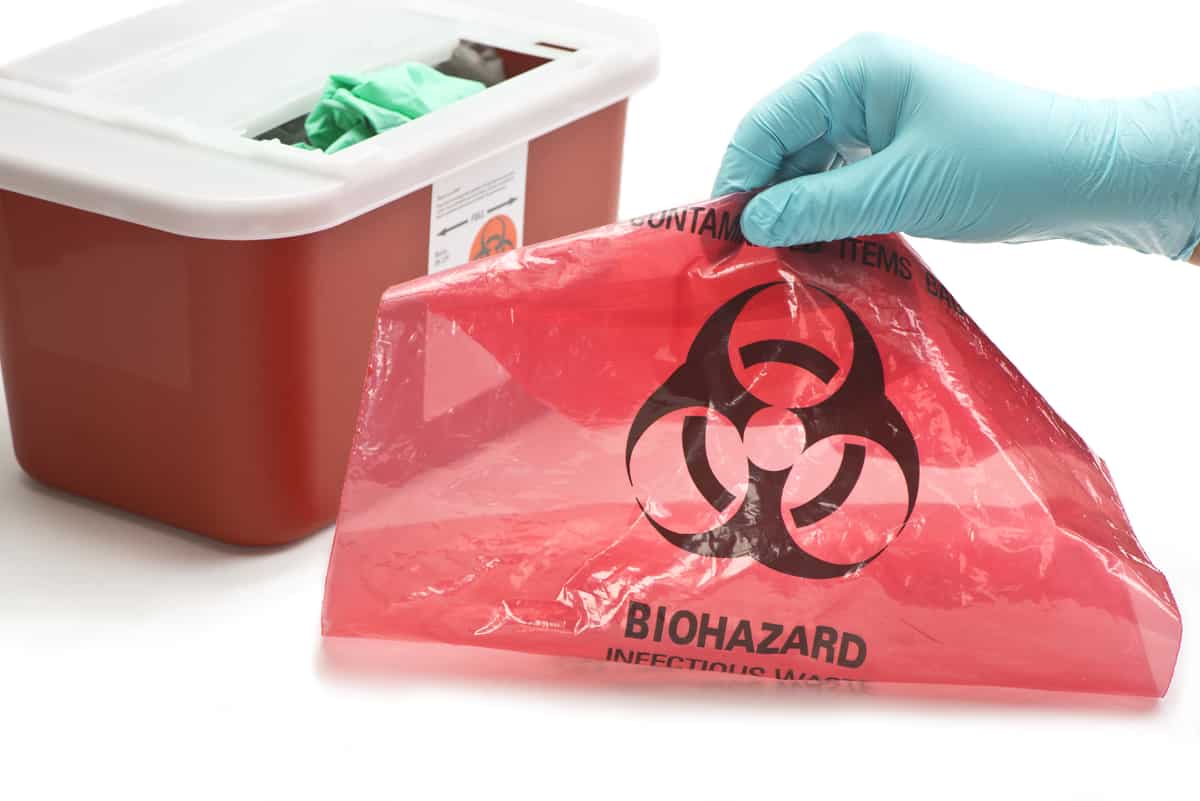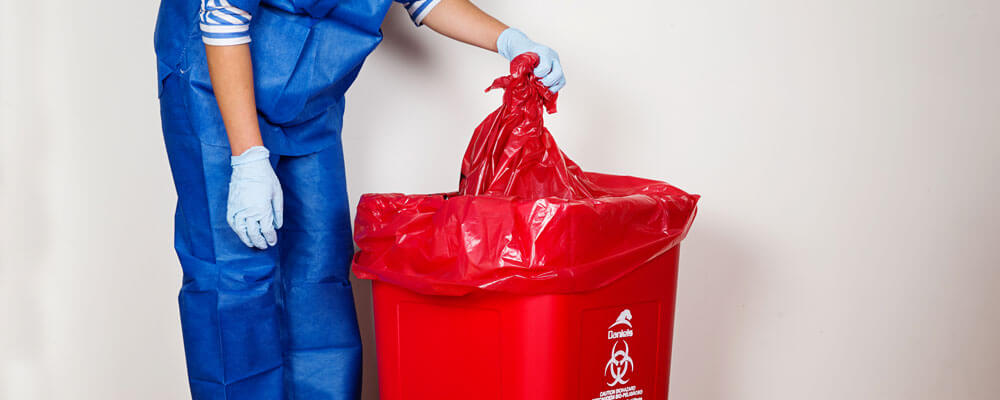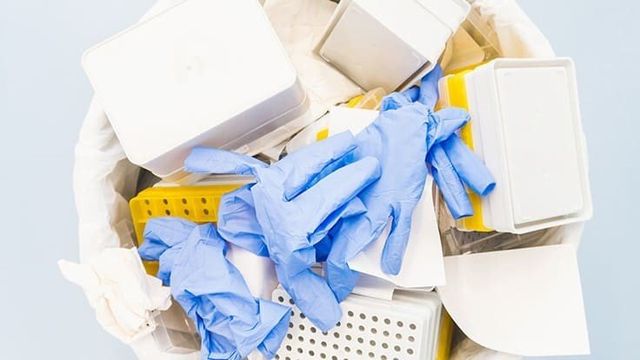Medical Waste Removal Excellence: Elevating Safety And Security Standards in Your Facility
Medical Waste Removal Excellence: Elevating Safety And Security Standards in Your Facility
Blog Article
Remain Ahead of Rules: Expert Advice on Medical Waste Disposal
In a globe where the medical care sector is constantly advancing, it is crucial for medical centers to stay in advance of laws when it comes to the correct disposal of medical waste. With stringent guidelines and regular regulatory changes, it can be testing to navigate the intricacies of this process. With expert advice, facilities can ensure conformity and mitigate risks connected with incorrect waste disposal. From understanding the various categories of clinical waste to applying the ideal collection and partition methods, this conversation will certainly offer useful understandings and workable suggestions to assist centers remain ahead of laws in the ever-changing landscape of clinical garbage disposal.
Understanding Clinical Waste Categories
Understanding medical waste classifications is crucial for correct disposal and administration in healthcare centers. Medical waste describes any kind of waste generated by healthcare activities that may position a hazard to public wellness or the atmosphere. It is critical to classify clinical waste accurately to guarantee its risk-free handling, treatment, disposal, and transport.
There are several classifications of medical waste that healthcare centers need to be accustomed to. One of the most usual categories include contagious waste, pathological waste, sharps waste, pharmaceutical waste, and chemical waste. Each classification has particular standards and laws for its appropriate administration and disposal.
Pathological waste refers to human cells, body organs, or body parts that call for special handling and disposal. Pharmaceutical waste comprises run out, unused, or infected medications that need careful handling and disposal.
Remaining Up-To-Date With Regulatory Modifications
Staying present with regulatory changes is essential for health care centers to make sure compliance and proper administration of clinical waste disposal. medical waste removal services. With guidelines constantly progressing, it is necessary for healthcare facilities to remain current to stay clear of penalties, fines, and potential injury to the setting and public health
To remain in advance of governing modifications, health care facilities must develop a system for monitoring and tracking updates. This can be done by signing up for regulative e-newsletters, attending conferences and workshops, and actively taking part in market organizations. In addition, centers ought to designate an employee or team in charge of remaining educated and distributing info to relevant stakeholders.
Normal interaction with governing firms is also essential. Medical care facilities need to establish partnerships with local, state, and government companies to ensure they are aware of any kind of changes in regulations that may impact their waste administration methods. This can be done through regular meetings, engagement in public remark durations, and proactive engagement with governing companies.
Furthermore, health care facilities ought to think about partnering with waste management firms that concentrate on clinical waste disposal (medical waste disposal services with WasteX). These firms are usually well-versed in the latest policies and can give assistance and support to guarantee compliance
Carrying Out Correct Collection and Segregation Approaches
To properly take care of clinical garbage disposal, medical care centers should develop proper collection and segregation approaches according to regulatory standards. Applying these approaches makes certain the safe handling and disposal of potentially hazardous materials, shields the environment, and reduces the risk of injuries and infections to health care employees and the public.
Correct collection and segregation methods entail the use of designated containers and identifying systems. Health care centers should supply clearly classified containers for various types of clinical waste, such as sharps, infectious waste, pharmaceutical waste, and non-hazardous waste. These containers must be color-coded and plainly marked to avoid complication and advertise easy identification.
In addition, health care centers need to educate their personnel on the correct procedures for gathering and setting apart clinical waste. This includes informing them on the various sorts of waste, the proper containers to utilize, and the value of complying with regulations and guidelines. Regular training sessions and correspondence course should be carried out to guarantee that staff participants remain updated on best techniques.
Additionally, health care facilities should establish a system for routine collection and disposal of medical waste. This might include partnering with qualified waste administration business that specialize in medical garbage disposal. These business will guarantee that the accumulated waste is transferred and disposed of in compliance with regulatory requirements.
Picking the Right Disposal Methods

Incineration is among one of the most usual and reliable methods for throwing away particular kinds of clinical waste, such as pathological waste and sharps. It includes the controlled burning of waste at high temperatures, reducing it to ash. Nonetheless, incineration can launch hazardous contaminants right into the air and add to air contamination.

Chemical treatment entails the usage of chemicals to counteract the waste and disinfect. Microwave treatment utilizes microwave power to heat and disinfect the his explanation waste.
Guaranteeing Conformity With Documents and Training
After thoroughly taking into consideration the proper disposal approaches for clinical waste, health care facilities should ensure conformity with regulations and decrease ecological effect by implementing efficient documentation and training treatments. This action is essential in preserving a risk-free and sustainable setting for both health care workers and the public.

Medical care employees that deal with clinical waste needs to get ideal training on waste segregation, handling, and disposal procedures. By supplying detailed training, health care facilities can encourage their personnel to make informed choices and decrease the threat of inappropriate waste disposal.
Verdict
To conclude, staying ahead look at more info of laws in clinical waste disposal is vital for health care facilities. medical waste removal service. Comprehending the various classifications of clinical waste, remaining updated with governing changes, executing appropriate collection and segregation methods, selecting the appropriate disposal approaches, and making certain compliance via paperwork and training are all vital steps. By complying with these standards, health care companies can effectively get rid of and take care of of clinical waste in a liable and risk-free way
From understanding the different categories of medical waste to applying the best collection and segregation approaches, this discussion will certainly give useful understandings and actionable tips to help facilities remain ahead of laws in the ever-changing landscape of medical waste disposal. - medical waste disposal services with WasteX
The most typical classifications consist of infectious waste, pathological waste, sharps waste, pharmaceutical waste, and chemical waste. Healthcare centers need to offer plainly labeled containers for various types of medical waste, such as sharps, transmittable waste, pharmaceutical waste, and non-hazardous waste. Health care centers ought to establish a thorough system to tape and track all elements of medical waste disposal, including types of waste produced, quantities, and disposal methods used. Medical care employees that handle medical waste should receive appropriate training on waste segregation, managing, and disposal procedures.
Report this page